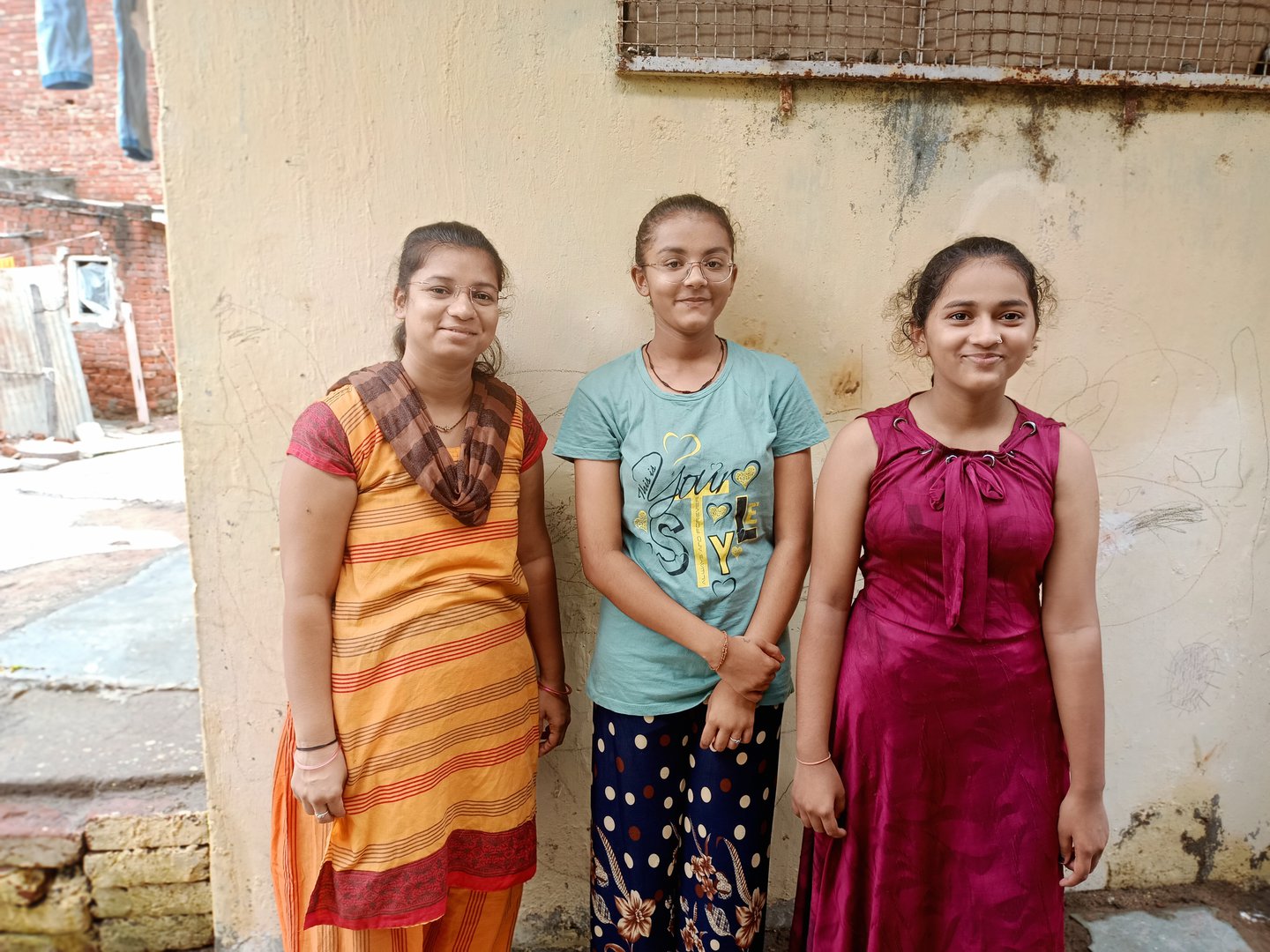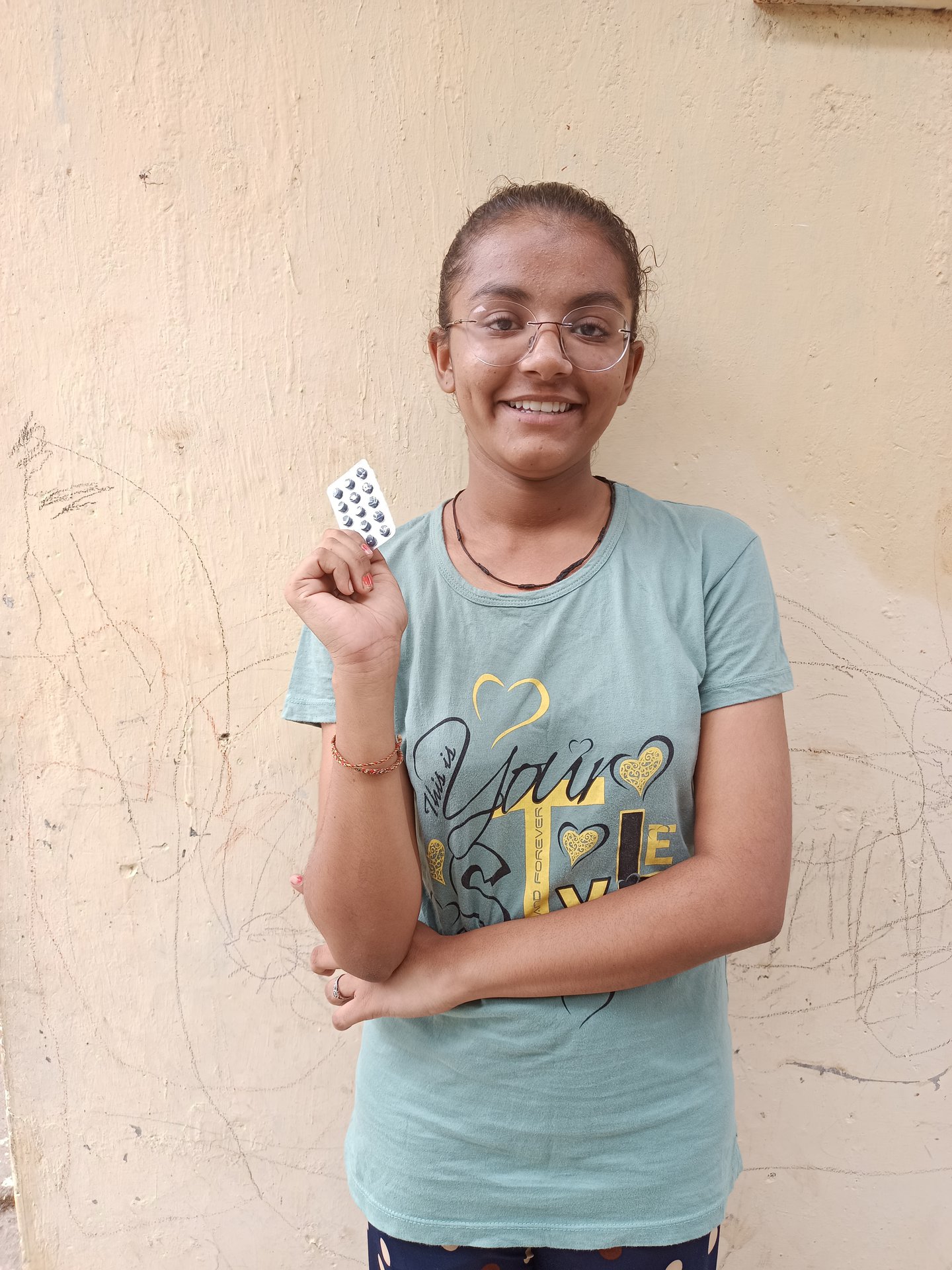Field Stories
Meet a health and wellness messenger providing peer support in India
March 20, 2025
WP_Term Object
(
[term_id] => 49
[name] => Field Stories
[slug] => all-field-stories
[term_group] => 0
[term_taxonomy_id] => 49
[taxonomy] => news-category
[description] => Discover the personal stories of people whose lives have been impacted by better nutrition, and those working tirelessly to deliver it.
[parent] => 0
[count] => 180
[filter] => raw
)
Overcoming coverage gaps for adolescent nutrition in India
Community-based platforms stepped up to support adolescent girls get the nutrition services they needed when schools closed due to COVID-19. This is Mahima’s story.
Posted on November 15, 2022
15-year-old Mahima is focused on a singular goal: passing her upcoming exams. The standard 10 student’s favourite subject is math, and while she’s yet to decide what she wants to do after school, she knows good grades will help her get there.
But her ability to excel at school was compromised when in-classroom learning was paused due to COVID-19. Along with the challenges of remote learning, Mahima lost access to a critical nutrition program provided at her school in Ahmedabad, Gujarat, India.
Weekly iron and folic acid supplementation (WIFAS) is a World Health Organization (WHO) recommended strategy to help prevent anaemia in adolescent girls aged 10 to 19 years and women 15 to 49 in regions where the prevalence of anaemia is 20% or higher. Anaemia leads to reduced resistance to infection and disease, decreased school performance, and reduced work productivity. For adolescents, particularly girls, who have unique and increased micronutrient requirements, micronutrient deficiencies can have devastating consequences. In Gujarat, according to the National Family Health Survey 2019-2020, the anaemia rate amongst girls aged 15 to 19 years is 69%, highlighting the urgent need for access to nutrition programs and services.

In April 2020, Gujarat issued a directive for districts to distribute WIFAS through frontline workers in community healthcare settings. Shifting from a school-based service delivery model to community-based platforms was not a small undertaking. Nutrition International, already a close partner of the national and state governments, provided technical assistance to support this transition in Gujarat with funding from Comic Relief. This included diverting WIFAS supplies from schools to outreach workers, delivering WIFAS to adolescent girls in their homes or through their community health centres, developing behaviour change materials relevant to the times, and supporting district officials to strengthen the WIFAS program though remote monitoring.
In Bavla, the village where Mahima lives, this meant supporting the anganwadi worker. Anganwadis are localized health centres that provide multiple services at the village level targeted at women and children. The anganwadi worker is familiar with the innerworkings of the village and with how to provide access to health resources to those who might not otherwise seek them out.
Anganwadis were previously tapped in India as central points to engage out-of-school adolescent girls. Out of a dire need that stemmed from the pandemic, they would grow their scope of service to meet the needs of school-going girls too, whose access to nutrition services stopped when classrooms closed.
Every month, local anganwadis host a Village Health and Nutrition Day (VHDN). These days are critical touch points to provide a variety of nutrition-related services at the village level. Nutrition International supports VHNDs by working with the government and implementing partners to provide training, resources and micronutrient supplements for distribution. It was through this monthly event that Mahima came to better understand her own health and nutrition.
Khushboo is the anganwadi worker in Bavla village. Working in close collaboration with the district coordinator who received training from Nutrition International, Khushboo reached out to Mahima and her friends and encouraged them to come to the anganwadi for the upcoming VHND session.

On arrival, the girls were screened for anaemia. Mahima was afraid to check her haemoglobin (Hb) level, as she was doing this for the first time in her life. She learned her Hb level was 7mg, which falls under the category of “severe anaemia” according to the Ministry of Health and Family Welfare operational guidelines. Khushboo, along with the coordinator, educated Mahima about the significance of a low Hb, and the connection between anaemia and iron and folic acid (IFA) consumption. It was then that Mahima shared she had unknowingly been experiencing common symptoms of anaemia – dizzy spells, weakness, and a fainting episode – since she stopped consuming WIFAS in school.
Mahima received treatment at the anganwadi and was prescribed the recommended dose of IFA supplements, which included Kushboo explaining the possible side effects. In addition, Kushboo counselled Mahima on the importance of a diverse diet, and encouraged her to incorporate more pulses, fruits and leafy green vegetables into her meals.
Kushboo followed up on Mahima’s progress by visiting her at home. She spoke with both Mahima and her parents to discuss their diet in addition to checking that Mahima was continuing with her recommended IFA dose. After receiving the dietary counselling, Mahima started to consume dark green leafy vegetables such as spinach, fenugreek, drumstick leaves and various dals (pulses).
“Previously, I used to have a lot of difficulty doing anything, and one time I fainted,” Mahima shared. “ I now know the importance of taking IFA regularly.”
When schools reopened, Mahima continued to receive WIFAS through her community-based platform as transitioning back to in-school coverage will take time. The COVID-19 pandemic disrupted all faucets of life, but programs like this one were able to help bridge a critical gap so that adolescent girls, like Mahima, continued to receive the support they needed.